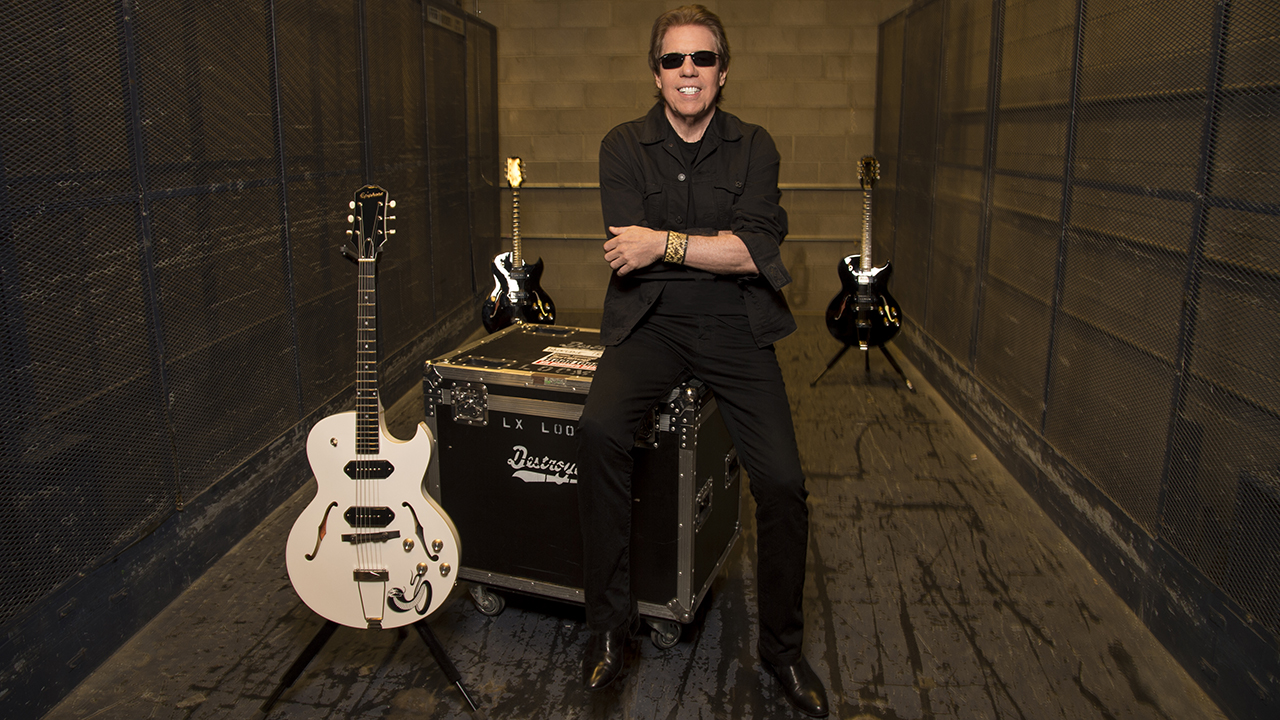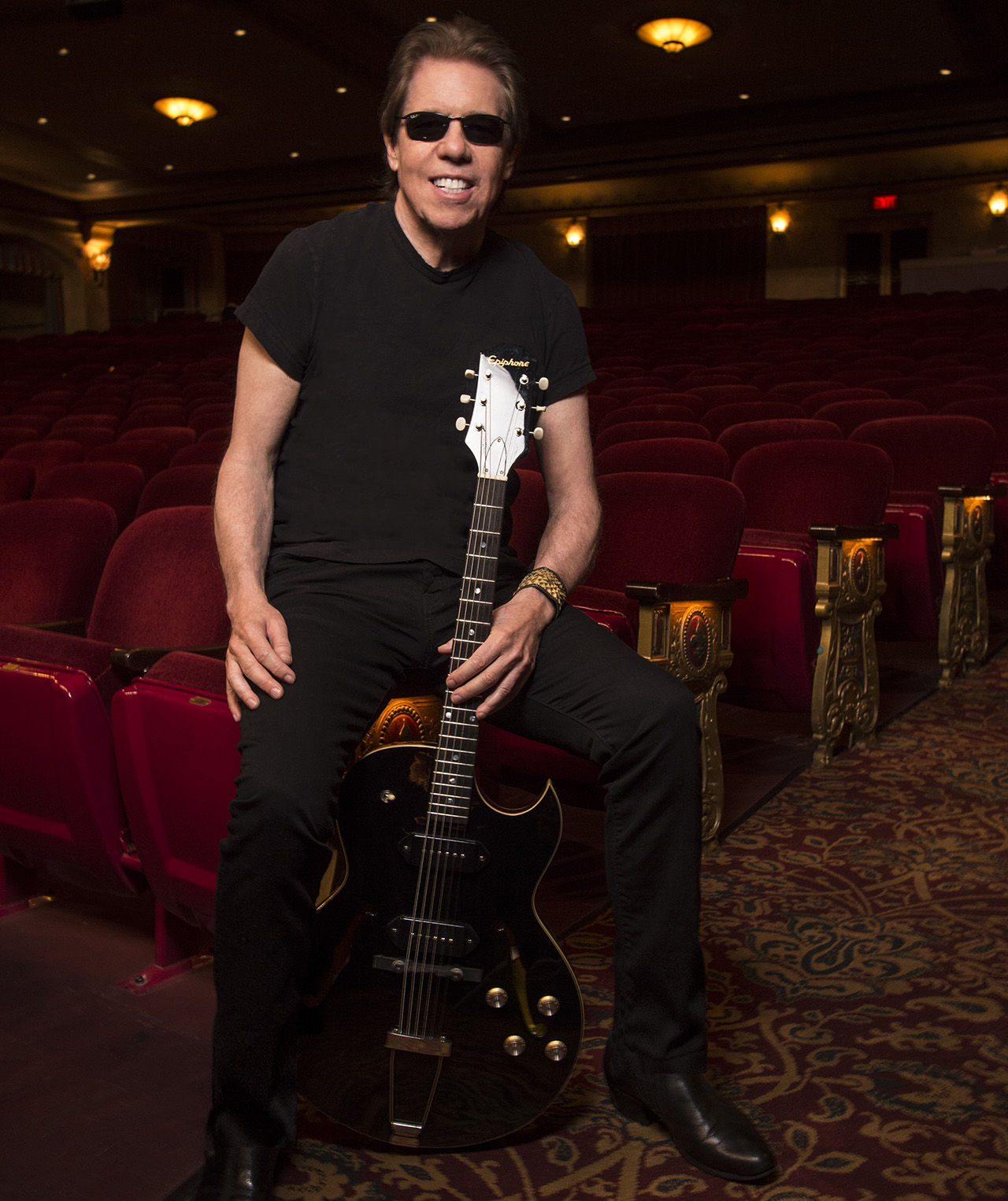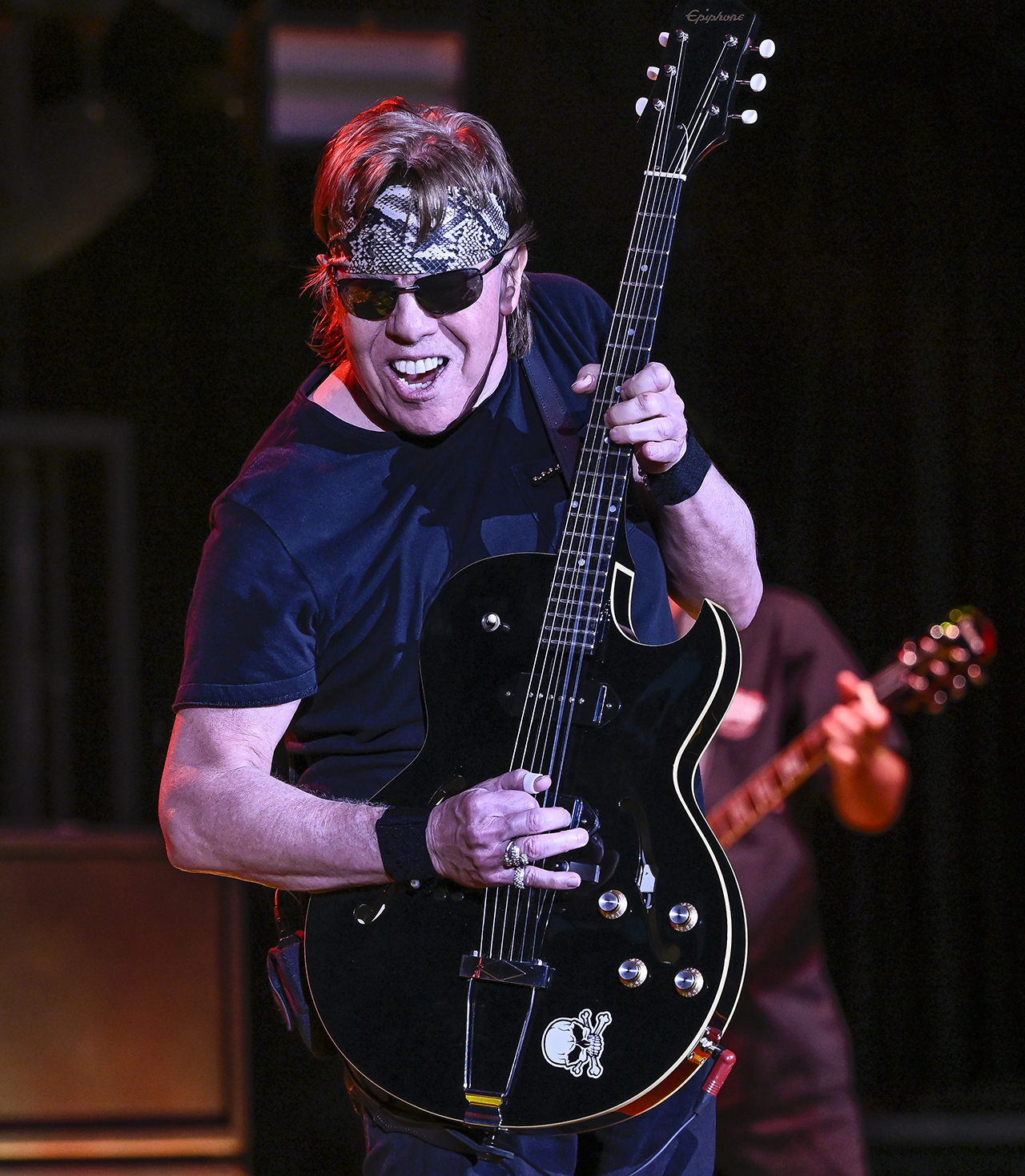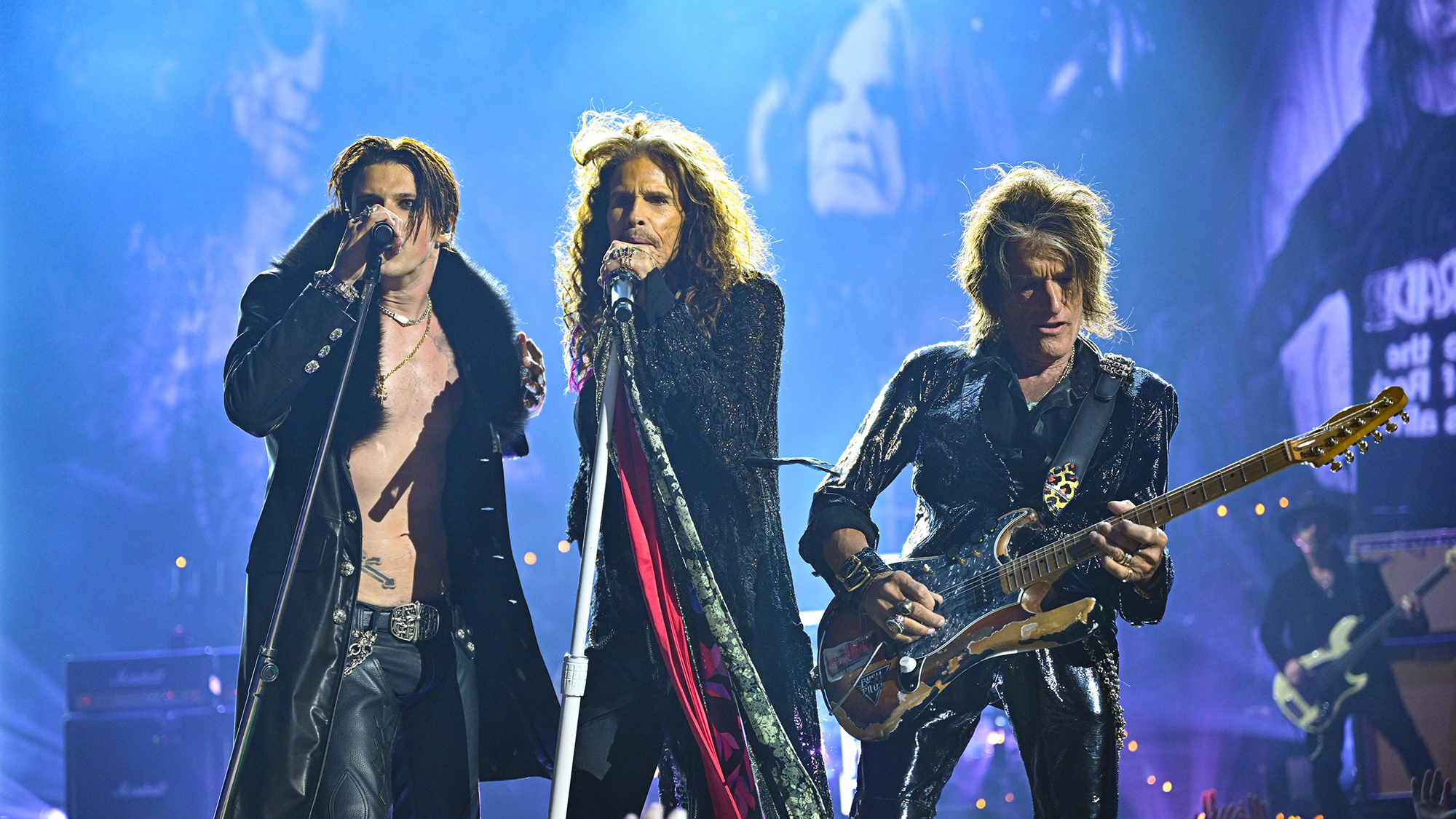“The only guitar I could ever play was the 125, but I wore them out – they were costing thousands to repair. They stopped making them around 1970; I was ready to stop playing”: George Thorogood on his “mutt” amp, and talking shop with Hound Dog Taylor
The 75-year-old – who’s not sure how he gets his sound – almost gave up playing when Gibson discontinued the ES-125. Now he says he’ll keep going until the guitar gives up on him

George Thorogood has a simple motto for making music: “Rock ‘n’ roll never sleeps – it just passes out.”
The 75-year-old, writer of songs like Bad to the Bone and I Drink Alone, is still out there with his beloved archtop guitar. “I’m still here,” he says. “They’re still calling.”
He reflects: “I don’t think I’ve really written, played, or done anything all that extraordinary. We’re fortunate to pick the right song and present it in a way that people appreciate, and make a living doing it.”
Though his playing is often overshadowed by his ballsy image and snarling vocals, Thorogood is a six-string devotee at his core. He plays daily and intends to maintain the habit: “I want to be Jeff Beck. I want to be Keith Richards. I want to be Bo Diddley and Jimi Hendrix.”
It’s possible that some young players pick up a guitar and think, “I want to be George Thorogood.” But he’s not sure that’s a good idea: “I pity them!” he laughs. “But like I say, I’m busy. They keep calling.”
Are you still mainly playing Gibson guitars?
“I’m using a custom-made Epiphone archtop, a single cutaway design, just like the Gibson ES 125 I used to play – I wore it out. The only guitar I could ever play was the 125, but I wore them out so bad; it was costing thousands of dollars to repair them.
All the latest guitar news, interviews, lessons, reviews, deals and more, direct to your inbox!
“They stopped making them in like 1970, so I was ready to stop playing altogether. Then our manager got together with Epiphone, and they donated me like 10 Epiphone guitars. And they started working on them to make the sound right. So that’s what I’m using these days.”

What drew you to the Gibson ES-125 in the first place?
“I was broke. I only had $200. We booked a gig and there was this guitar at a pawn shop, a $200 Gibson that had been there for years. So I bought it, and it worked because I was always playing acoustics.
“In those days they called the ES-125 ‘semi-acoustic.’ The Beatles played guitars like that and so did Keith Richards. I thought, ‘If it’s good enough for The Beatles and The Stones, it’s good enough for George.’”
I helped Hound Dog and them carry their amplifier from their car to the gig once or twice. But that didn’t make me a roadie, you know?
How does your new Epiphone compare to your vintage Gibson?
“There’s no comparison – the Epiphone is like hitting a baseball into the gap, and you have to slide into second base with a double. The Gibson is like hitting a ball into the upper deck!”
What amps are you using now?
“I’d tell you if I knew what they were called! My amplifier situation is a real mutt. My tech put a combination of things in there to get it close to a Fender Dual Showman. It’s hard to pinpoint exactly what kind of amp I use. It’s custom-made with 12-inch speakers.”
Do you have a specific sound in mind?
“Yeah – my sound! I’m looking for the sound I had years ago. But the sound I’m getting now is even thicker; it’s more distinct. It’s loud, but it’s not distorted. We have a guitar tech who spends a good hour on the bandstand before to get the sound right where I want it.”
What initially inspired that sound?
“What inspired me were the guitar players themselves. I believe that no matter what guitar Jeff Beck picked up, he’d still sound like Jeff Beck. No matter what guitar Chuck Berry played, or Keith Richards – who plays a thousand different guitars – as soon as you hear him play, you know it’s Keith Richards. I think it has a lot to do with the player more than the instrument.”
You worked as a roadie for Hound Dog Taylor –
“No I didn’t!”
Is that just a rumor? Where did that stem from?
“I don’t know! Hound Dog Taylor didn’t even have a roadie. There were three of them in the band, and they loaded and unloaded their own equipment.
“The idea of George Thorogood being a roadie makes our entire organization laugh very hard. Me being a roadie – are you kidding me? And we don’t call them ‘roadies’ anymore. It’s called ‘crew’ and they’re all very educated people in their field.”
Did you ever interact with Hound Dog Taylor at all?
“I helped Hound Dog and them carry their amplifier from their car to the gig once or twice. But that didn’t make me a roadie, you know?”
Were you able to talk guitars or technique with Hound Dog?
“He didn’t talk much. But we did converse a few times, and he was very relaxed and very enthusiastic about what I was doing with the slide guitar. He was impressed with that because, of course, he was primarily a slide guitar player. His stories weren’t about musical expertise… you don’t want to hear me repeat those!”
What inspired your cover of One Bourbon, One Scotch, One Beer?
“I had a record by John Lee Hooker, Live at the Café Au Go Go, where he was backed up by the Muddy Waters band, and the song was on there. I went to see him play. In those days, people sat riveted to their seats, and you could hear a pin drop, like in a temple or a church. People revered the blues.

“But Hooker was the only blues guy where people were up dancing, and the floor was packed. I’d never seen that before. The song that had the most dancing was One Bourbon, One Scotch, One Beer, and the people who were dancing to the song were all women.
“They were all very, very sexy, and not drunk! They were just feeling the rhythm and the beat. So, I said, ‘If I ever get a band together, that’s the first song I’m going to learn.’”
I was watching On the Waterfront and Marlon Brando said, ‘I’ve got the rest of my life to drink alone.’ I said, ‘Bingo!’
Another famous cover of yours is Hank Williams’ Move It on Over. What led to that?
“I’ve never really been a big fan of that song, but Rounder Records liked it because they’re a country and bluegrass label. But we used to do it in our soundchecks.
“When we did the second record we didn’t have enough material to fill it out. So Move It on Over was suggested, and I threw it in there. It took a long time before we put it in the show because I never really got the song. But people like it, and the people rule. You’ve got to play what the people want.”
Two of your most noteworthy original songs are Bad to the Bone and I Drink Alone. How did those come about?
“In our neighborhood we had a different word for ‘groovy’ or ‘cool’ – the word was ‘bad.’ So I said, ‘I wonder if we could get a song with that in the title.’ And it’s a prepositional phrase, like Born to be Wild, or Gone with the Wind, or Blowin’ in the Wind, and I like those exotic lyrics. I was a big fan of Bo Diddley and the Rolling Stones, who used to put out those really exotic lyrics in songs.
“With I Drink Alone, I was watching On the Waterfront with Marlon Brando talking to Eva Marie Saint. He’s saying, ‘Come on, have a drink with me. I’ve got the rest of my life to drink alone.’ I said, ‘Bingo!’”
Your last record was 2017’s Party of One. Do you have another record in you?
“Every time I get down to thinking about recording, I get flooded with offers to perform live. I go, ‘Well, if they still want us with what we have, what’s the point of doing a new record?’ Plus, they’re very expensive to make. It’s not that I’ve given up on it; but I’m mostly involved with performing live.”

Do you still feel inspired to pick up the guitar?
“There are no breaks in this business. I pretty much pick it up every day. I’ve never been a popular guy, and I was never any good at sports, so there was nothing else but the guitar. As long as the guitar is interested in me, I’ll stay interested in the guitar.”
What does the future hold for you?
“We’ve got a lot of stuff going on this year. I don’t know what the future holds; it depends on the offers we get, where they are, and, you know, my health on top of it. I’m concentrating on what’s going on right now.”
- Keep up with Thorogood’s tour dates.
Andrew Daly is an iced-coffee-addicted, oddball Telecaster-playing, alfredo pasta-loving journalist from Long Island, NY, who, in addition to being a contributing writer for Guitar World, scribes for Bass Player, Guitar Player, Guitarist, and MusicRadar. Andrew has interviewed favorites like Ace Frehley, Johnny Marr, Vito Bratta, Bruce Kulick, Joe Perry, Brad Whitford, Tom Morello, Rich Robinson, and Paul Stanley, while his all-time favorite (rhythm player), Keith Richards, continues to elude him.
You must confirm your public display name before commenting
Please logout and then login again, you will then be prompted to enter your display name.


